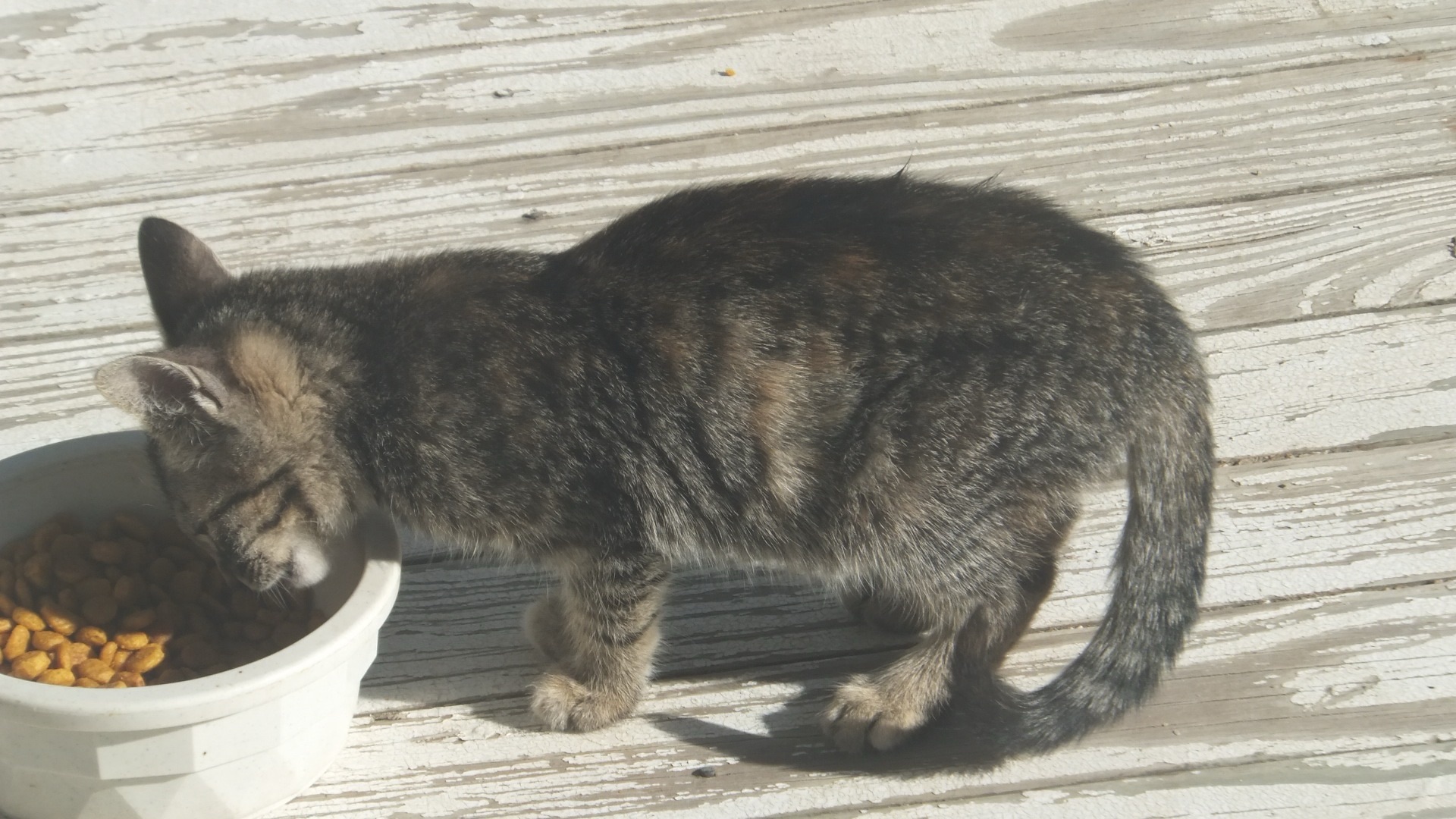Photo: Double Check
Last week in San Antonio, I looked out the front storm door one evening and saw this fellow relaxing on the sidewalk. I had to double-check to make sure Floyd was in the house, but of course he was.
We’ve seen this guy around. One of our neighbors participates in San Antonio’s Trap, Neuter, Return (TNR) program for the local ferals, and she says they’ve gotten most of the neighborhood kitties taken care of. I believe this fellow is one. We’ve seen him (presuming it’s a him — I’m really not sure) around the yard for the last year or so.I credit San Antonio’s move to the TNR method of dealing with the stray cat population for me deciding to do what I’ve decided to do in our area in Central Texas. The idea behind trapping, neutering, and releasing presumes a cat colony minding it’s own business is beneficial (as long as they aren’t reproducing). If cats are rounded up and taken to a shelter, most would wind up being euthanized, and the void in the community would simply attract more cats. If the cats are spayed or neutered and re-released into their community, it discourages more cats from showing up.
What I’ve tried to do in my little corner of Central Texas is similar to that. A couple of years ago, we had about 20 cats roaming in our couple block area. Animal Control trapped them, and I presume most of them were euthanized, because they were not socialized to humans, making them poor candidates for adoption. When I saw a foursome of young cats with a foursome of kittens, a couple of years ago, I could see the same thing happening all over again. I liked having a few cats in the neighborhood to keep rodents in check, but I dreaded the thought of how many cats we could have if they were not held in check.
That led me to trapping and getting the older ones spayed and neutered. That went fine. The kittens, as many of you will recall, were problematic. I trapped them, but they were too young to get spayed or neutered (by my vet, anyway), and they were too wild to be good adoption candidates (and winter is not prime kitten adoption time, either). That’s how I wound up with four more cats than I planned on having, but that does happen.
If you’re going to feed local strays or ferals, please do the humane thing and TNR.




We don’t have a large population of feral cats here, maybe because we have so many birds of prey and other predators. Kittens without a house to stay in might not survive very long, so the ferals die out. But when we lived in Los Angeles, there were lots and lots of them. We didn’t approach them–really, the cats are not approachable unless you’ve got superpowers–but we did see them, and notice the individuals among them.
We knew we would not be staying too long at our first apartment, so we kept many of our moving boxes on our patio, which was small and walled in with cinderblocks. Not a pleasant place to sit or to eat. One of the ferals gave birth in one of the boxes. She wouldn’t let us anywhere near the kittens, and one by one, they died. I don’t know why. All her kittens died, and this happened two or three times in the two years we lived there. It was very sad. She always came back to that box to have her babies. I don’t know where she had them after we left. Or before we came, for that matter.
I’m so glad you are helping the kitties.
I absolutely agree on spaying or neutering.
I’m such a proponent of TNR. We used to have an overly abundant feral population where I live. TNR has reduced the population. There’s a semi-feral cat that I let in sometimes. She’s become kind of my cat, but she does insist on going outside, and if I try to keep her in, she streaks out around my feet when I go out. Fortunately, I live in a fairly quiet area although at night there are owls, raccoons, and the occasional coyote, and that is worrisome.
I’m visiting from the A to Z list.